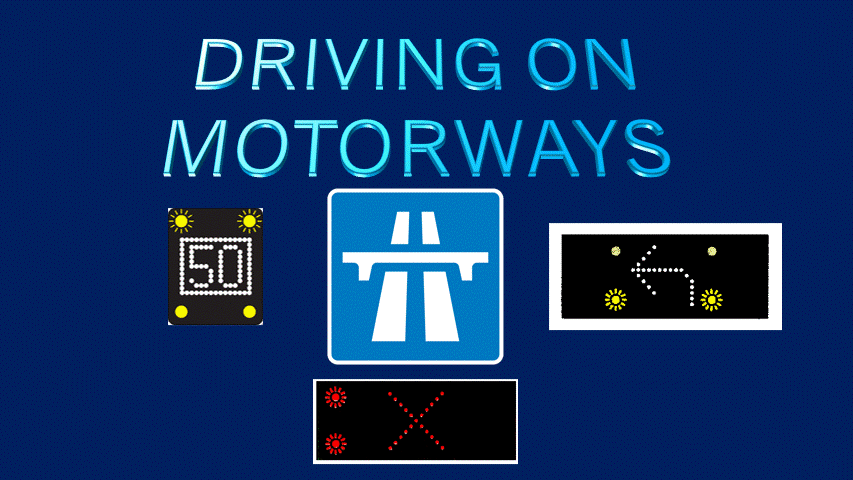


Is not as scary as you think!.
Motorways are possibly the most safest roads in the UK to drive on.
Although daunting initially for learners, once on them and having an understanding of the rules has been gained, most learners say that they
"feel safer" on Motorways than normal roads.
This is possibly because:-
No right hand turns.
No traffic lights.
No Roundabouts (other than when you exit a motorway slip road).
No Pedestrians / Cyclists.
Wider lanes.
You can see well into the distance.
Massive signs well in advance of things changing or exits coming up.
Although all these can be real benefits for less anxiety when driving,
they can also have their pitfalls.
Motorways can become very "boring to drive" based on the same surroundings mile after mile after mile, this can lead to a lack of concentration and could even make you feel sleepy especially at night when your body clock is wanting you to go to sleep.
There are a lot of motorways that have no street lighting and other vehicles lights may add to making you feel drowsy.
On long journeys, stop frequently, have a walk about and get some fresh air and get your blood flowing, potentially even take a nap.
Drink a caffeine drink to help keep you awake.
But don't carry on if you feel tired. Tiredness KILLS
You could fall to sleep at the wheel without even knowing you are falling to sleep.
Things to consider and rules to obey when driving on Motorways.
Lane 1 is the normal driving lane, all other lanes are for overtaking.
Lane 1 is not the slow lane and the rest get progressively faster with lane 3 or 4 being the fastest lanes.
Once you have overtaken a vehicle, move back into lane 1 unless you are continuing to overtake other vehicles.
It is now an offence to sit in any other lane if you are not making progress on vehicles in other lanes. This is know as Lane Hogging.
Laws MT(E&W)R regs 5, 9 & 16(1)(a), MT(S)R regs 4, 8 & 14(1)(a), and RTA 1988, sects 35 & 186, as amended by TMA 2004 sect 6
If you are no longer catching vehicles when you are sat in lanes 2,3 or 4 then you should move back into lane 1 at your earliest and safest opportunity.
Always ensure that before you move back into a lane after an overtake that you can see the front of the last vehicle you overtook in your rear view mirror before moving into the lane. This will ensure there is adequate space between you and the vehicle you are pulling in front of.
2 seconds is the standard minimum safe following distance on dry roads.
Double this to 4 seconds when it is wet,
and 20 seconds where there is snow or ice.
If you are unsure of how to work out a "safe following distance" then please watch this video
Be extremely careful when it is raining as at the increased speeds, spray from other vehicles and especially lorries will impair your vision.
Standard Motorways have a hard shoulder (the lane to the left of Lane 1) this is in case of an emergency or your vehicle has developed a mechanical issue.
It is not for "having a rest, or to let your child get out and have a pee"
Marker posts are placed at every 100 metres

If you break down, try and stop relatively close to one of these, pay attention to the number on the top of it and make your way to one of the emergency phones if you do not have your mobile phone and do not have recovery company subscription.
The nearest phone to you will be shown by the direction arrow on the marker post.
If you do break down and are able to, exit the vehicle from the passenger doors. The speeds that vehicles are travelling along a motorway can create a slipstream of air (especially large vehicles) it is quite possible that by getting out of your vehicle via the drivers side, you could be unbalanced by the slipstream and pulled into lane 1.
Once you (and all other occupants if possible) are out, get yourselves behind the safety barrier and wait there until recovery have arrived, the vehicle repaired or recovered before retuning over the barrier.
SMART MOTORWAYS
There will be NO HARD SHOULDER.
On the whole, Smart Motorways have 4 lanes but may reduce to 3 or even 2 lanes at certain stages.
Other items that make it clear that you are on a Smart Motorway would be SAFE ZONES
Safe Zones are the areas as shown in the picture below that are painted yellow.
They are on average 1 mile apart from each other and should your vehicle develop a fault it is highly advisable if the vehicle is still driveable
(even with a puncture) to attempt to make it, even at very slow speed, to one of these zones.
You would not want to be stopping on a live carriageway with nowhere to pull in when vehicles behind you are potentially doing 70mph.
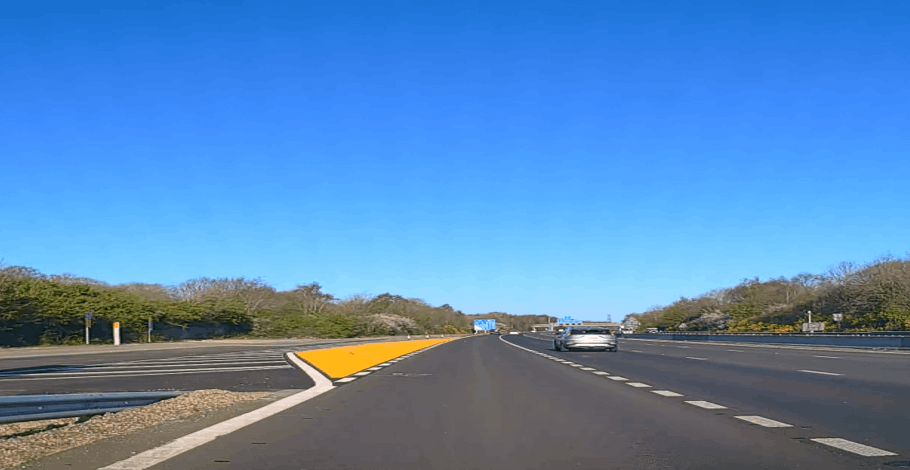
These cover each individual lane, supplying information relative to each lane.
These are there to notify you of variable speed limits, lane closures or other restrictions.
PAY ATTENTION TO THEM! THEY ARE THERE FOR YOUR SAFETY.
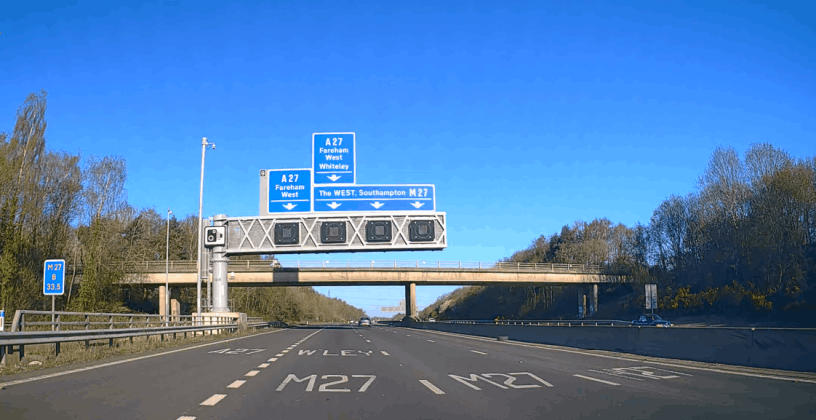
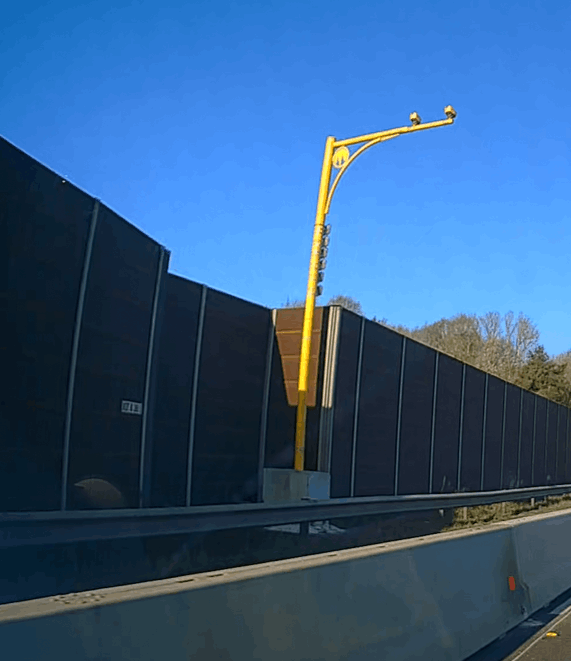
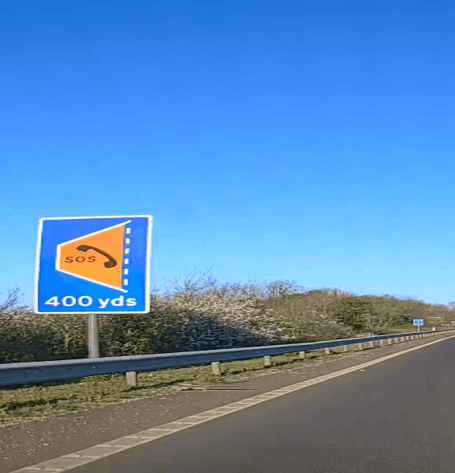
These signs notify you of the distance to the next safe zone
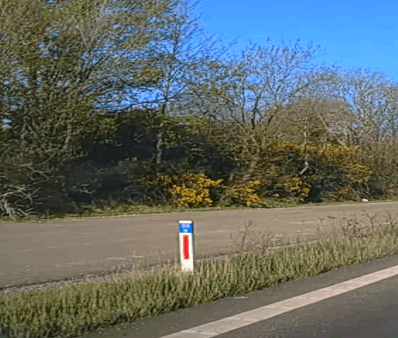
These have a number on them, and and arrow pointing in the direction of the nearest emergency phone.
make a note of the marker number and give this information to the call handler.
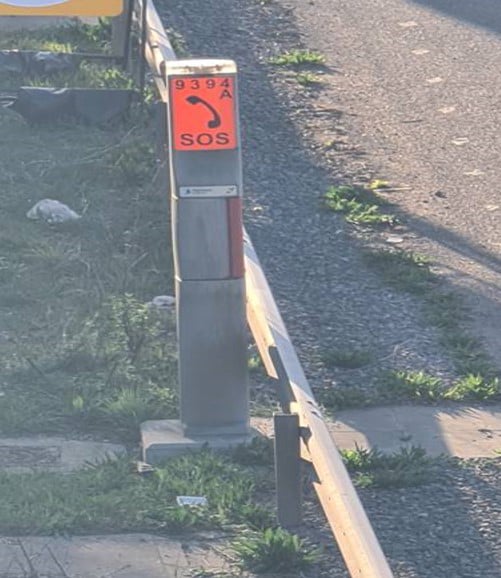
These are positioned every mile along the motorway.

Stopped Vehicle Detection/ Stranded Vehicle Detection.
These work by radar to automatically detect every vehicle that is on the motorway.
If a vehicle breaks down the system alerts authorities of a stationary vehicle. Cameras also accompany these unit to provide visual feedback to control room operators.
When activated, operators can activate overhead gantries especially on smart motorways to close lanes.

These are advisory signs

These are MANDATORY
RED flash from side to side
Amber flash up and down
These are designed to grab your attention sooner.
AMBER AND UP AND DOWN = ADVISORY
RED AND LEFT AND RIGHT = MANDATORY
ALSO SPEED LIMITS WITH A RED CIRCLE ARE MANDATORY
OVERTAKING
Mirrors are your best friend when it comes to overtaking and will be generally used more when on motorways.
Speeds are obviously faster on Motorways which means things can happen much quicker, and that is why regular use of your mirrors is vital.
Although overtaking on a motorway is much safer than on a standard two way road, as traffic is all flowing in the same direction.
Approach speed of vehicles behind you can be easily misjudged.
By planning ahead, seeing that you may be catching vehicles ahead of you and knowing that in a short space of time you will need to overtake them, will ensure that by using your mirrors you can assess what is behind you, what lanes they are in, how quickly they are catching you, and when you can plan to get an indicator on, move out and perform the overtake.
NEVER CAUSE ANOTHER VEHICLE TO CHANGE DIRECTION OR SPEED TO PERFORM AN OVERTAKE.
AT THESE SPEEDS IT IS EXTREMELY DANGEROUS!
Approaching slip on and slip off roads
If you are continuing ahead and not exiting a Motorway then if it is safe to do so, it is advised that you move into Lane 2 about 1/2 a mile away from the exit. Then stay in Lane 2 if there is a slip on road just ahead, until you have cleared that slip road.
Once you are clear of both slips return to Lane 1.
This will allow Lane 1 to be kept clear for those vehicles that are exiting and joining the Motorway.

If you are staying on the motorway after an exit, it may be advisable "if safe to do so" to move into Lane 2, to ensure those wanting to join the motorway have a clear lane 1 to join on to.
If you are unsure if there is a slip on lane after the slip off lane, just ensure as you pass the slip off lane to take a peek up the slip road and see if there is a roundabout sign.
If the roundabout sign has two white lines at the top of the sign then it means there WILL be a slip on lane coming up.
If there is only 1 line at the top of the sign, there will not be a slip on lane and you could stay in Lane 1.

If you stay in Lane 1, this lane will take you to the slip off lane.
If you were in Lane 2, be VERY aware that traffic may pass you on the left, especially if you need to move into Lane 1.
Vehicles are permitted to "undertake" in this situation where they are using the left lane to exit the motorway.

HTML Generator